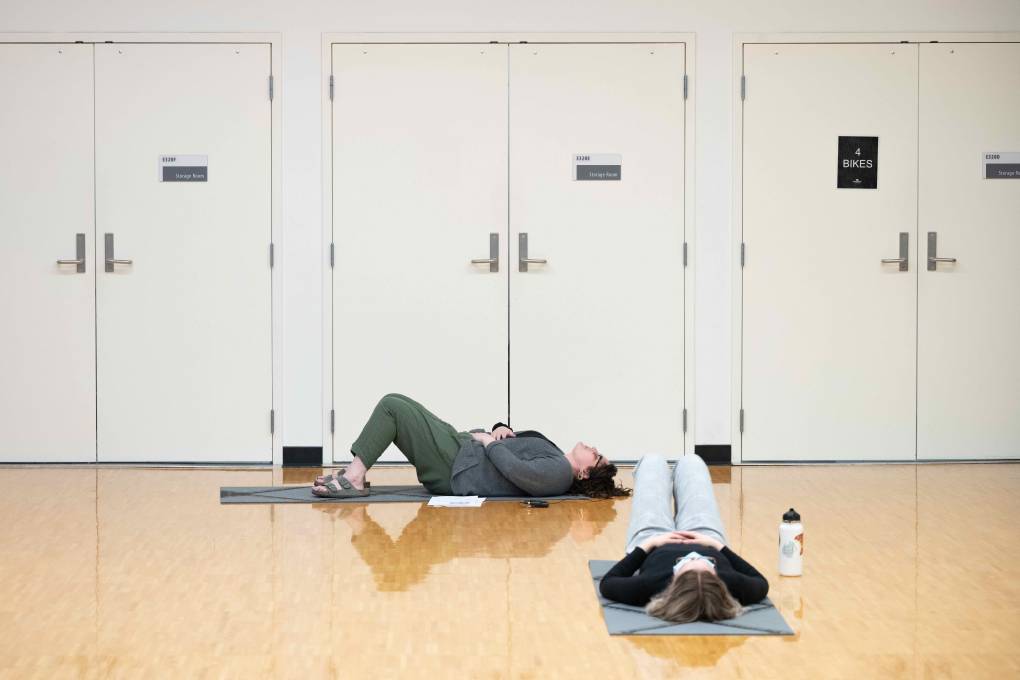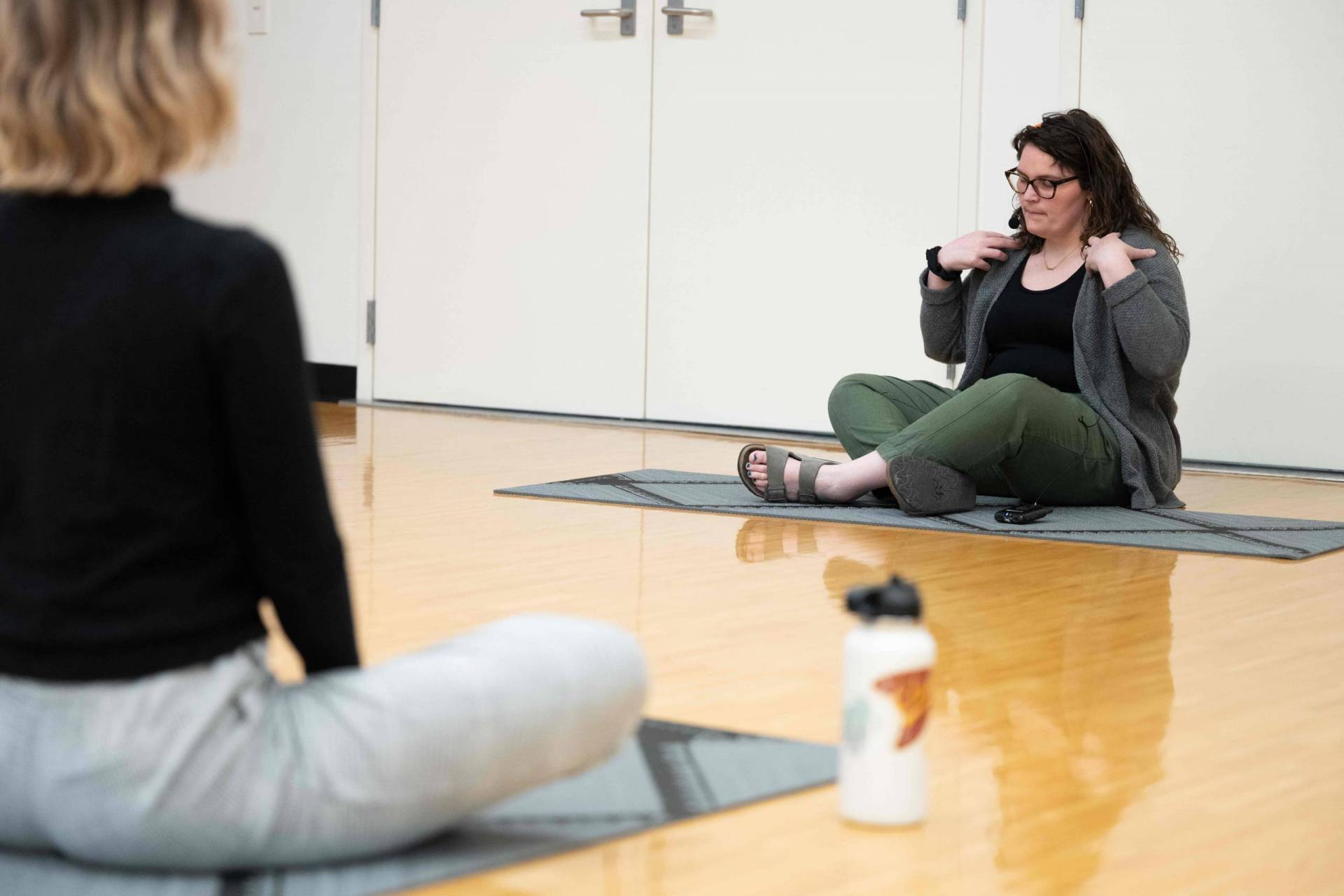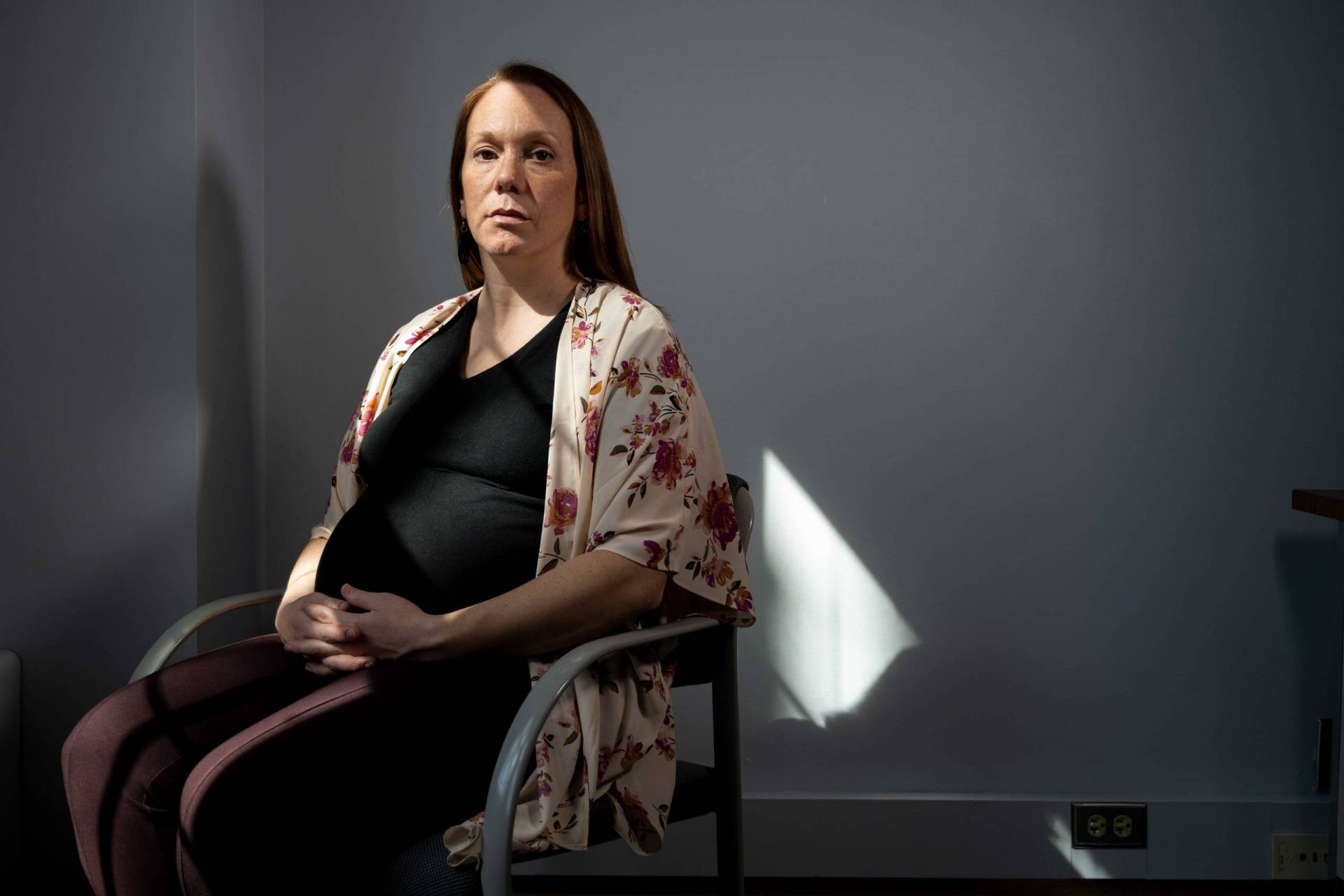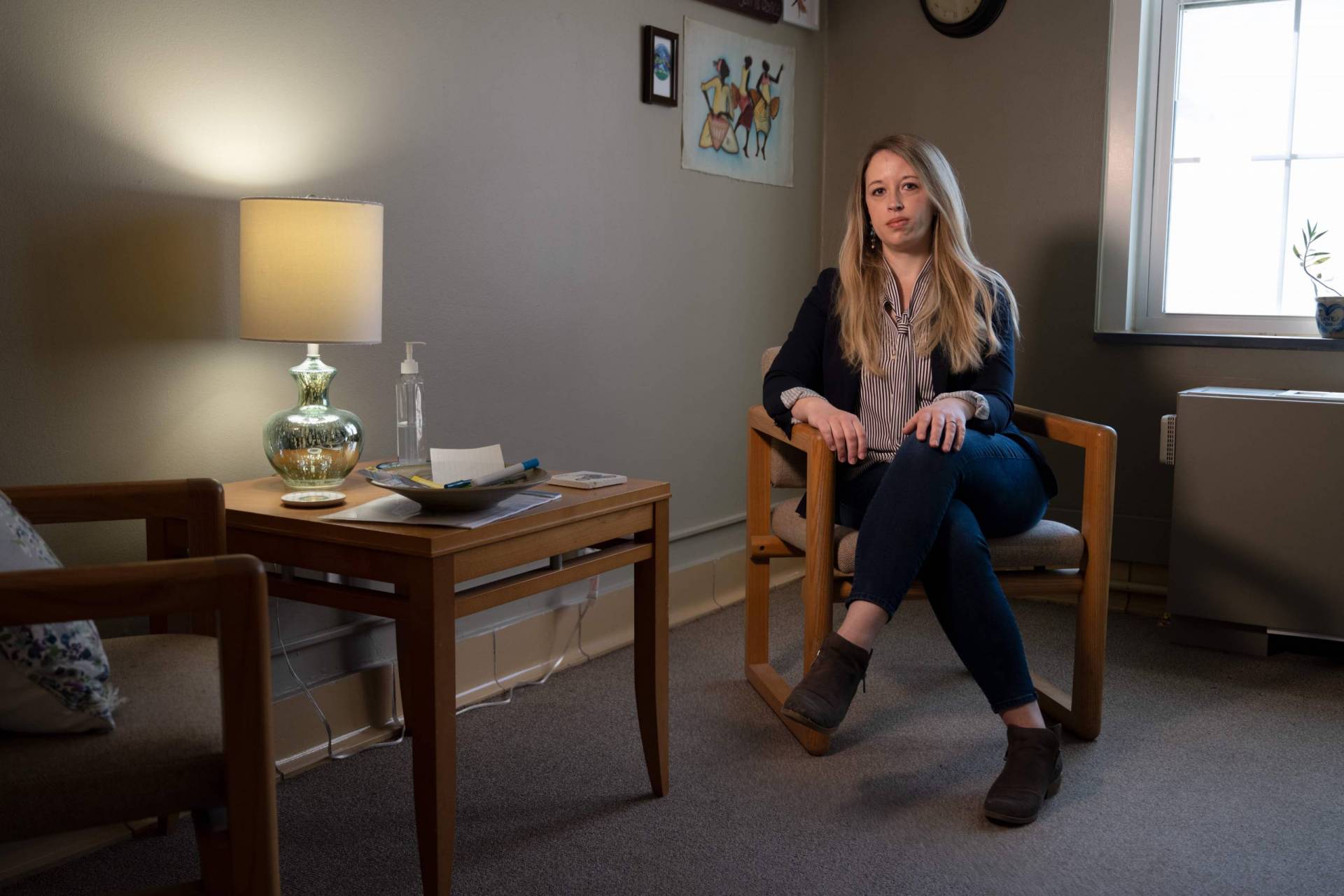
Inside a college counseling center struggling with the student mental health crisis – MindShift
Ben Locke, a psychologist who founded the Center for Collegiate Mental Health, sees this opening up of campus counseling to a much broader swath of students as an unintended consequence of widespread efforts to prevent suicide and destigmatize therapy.
For the past two decades, colleges, aided by millions of dollars from the federal government and foundations, have been telling students to seek help, that it’s “OK to not be OK,” he said. They’ve trained faculty and peers to identify students in distress and refer them to counseling, and urged students not to suffer in silence.
Now, as a result of that well-intentioned and often helpful push, students are seeking therapy for even routine challenges, said Locke, who is now the chief clinical officer for Togetherall, an online mental health community.
Schmitt, who has been a counselor for a decade, said she’s seen a shift in cultural attitudes towards emotional well-being, with schools now teaching kids coping skills as early as preschool. “My 2-year-old son will come home from school and say: ‘I’m sad. I have a big feeling. I need a break,’ ” she said.
Schmitt said she was drawn to counseling work because she enjoys “being present with people,” supporting them through highs and lows.
“I see my role as a facilitator. They’re doing all the hard work,” she said. “I love being there to see that growth.”

But it’s not always easy to be present in her own life. She tries to practice self-care, going for walks with her toddler, or hitting the elliptical trainer after he and his baby brother are in bed. But sometimes a thought or worry about a client will creep into her head when she’s at home.
“The most challenging thing is being able to sit and be present and be as kind and compassionate towards ourselves as we are to everyone else,” she said.
At 1:15, heading for her mindfulness session, Schmitt left her office in the University Capitol Center, a shopping mall at the edge of the university’s sprawling downtown campus. The counseling center opened a second location here, around the corner from a tanning salon and next door to Candy Nails, in 2017, after it outgrew its other office, an aging brick building on the opposite side of the Iowa River.
She hurried through the midday gloom to the Campus Recreation and Wellness Center and climbed three flights of stairs to a yoga studio, where she settled onto a mat in the front.
“Do you ever feel like your thoughts are racing or are all over the place?” she asked the students.
“All the time,” answered one.
Schmitt instructed the students to sit silently, breathing slowly while they visualized their negative thoughts settling to the bottom of a snow globe, an exercise she called “emotional blizzard.”
Wellness workshops like this one, called “Mindfulness Matters,” have become common on college campuses, part of an effort to confront student stress before it becomes severe. The University of Iowa increased the number of hours it spends on outreach to students by 123 percent between fiscal 2013 and fiscal 2021, according to Kelly Clougher, the other interim co-director of Iowa’s University Counseling Service.
It’s not clear, though, if the programs are easing the pressure on counseling centers. For some students, a handful of coping strategies may be all they need to manage on their own. But for students with more serious concerns, outreach programs can serve as a soft entry to the counseling center, driving up demand.
Though the stigma surrounding mental health has diminished in recent years, some communities remain skeptical, or even dismissive, of therapy, and students of color are less likely to seek treatment than their white peers, research shows.
To reach students who might not seek help on their own, many colleges have begun “embedding” counselors in dorms and academic buildings, where they can build trust with students, on their turf.
At the University of Iowa, five counselors spend eight hours a day meeting with students in offices located in dorms and professional schools. The effort has been so successful that some of the embedded counselors are struggling to keep up with demand.
“We’re at a place where it feels unsustainable,” said Clougher.

After Mindfulness Matters, Schmitt hustled to the Iowa Memorial Union, where a group of students was hosting a suicide awareness event called “Send Silence Packing.” Backpacks with photos and heartbreaking stories of students lost to suicide nationwide lined the stairs and filled the ballroom, where the song “Just Keep Breathing” by We the Kings played over a loudspeaker, reminding listeners that they weren’t alone.
Annamaria Iarrapino, the president of Iowa’s chapter of Active Minds, a national student organization that sponsors the traveling exhibit, said the group was “trying to change the conversation around mental health, reducing the stigma.”
Iarrapino said her group isn’t pushing for major policy changes on campus, as some students at other schools have. But she would like to see colleges devote more resources to mental health.
“There need to be more mental health professionals, because so many students need help,” she said.
In fact, many colleges have ramped up their hiring in recent years. The University of Iowa doubled the size of its counseling center staff, to a couple dozen individuals, between roughly 2016 and 2019.
But they still couldn’t keep up with demand.
“We saw more students, but nobody waited any less,” said Barry Schreier, the former director of the University Counseling Service who spearheaded the expansion. “We figured out that we couldn’t hire ourselves out of the problem.”
Counselor caseloads vary widely among universities, ranging from 12 to 314 clients a year, with an average of 90, according to the latest numbers from the Center for Collegiate Mental Health. The University of Iowa’s caseload per counselor is 120.
Centers with larger caseloads tend to require clinicians to take on new cases even if they don’t have time available — what’s known as an absorption model. To accommodate everyone, they often set session limits and space out appointments, scheduling students on a biweekly basis.
Centers with smaller caseloads are more apt to use a “treatment” model, assigning students a counselor when a spot opens up. Though this can mean a wait for treatment, staff members get more predictable schedules, and students are more likely to attend therapy weekly, achieving better outcomes.
The University of Iowa tends towards an absorption model with its embedded counselors but uses a treatment model in its main counseling center.
To reduce wait times, the center uses a “stepped care” approach, directing students with less serious concerns to lower tiers of service — support groups and workshops, among them.
Still, during busy periods, wait times for individual therapy can stretch up to six weeks — particularly if a student has a specialized need, such as an eating disorder, or limited availability.
Though Iowa doesn’t have a strict session cap, it informs students that therapy will be brief, and focused on specific goals.
“It’s not ‘Let’s work on everything in your life,’ but ‘Let’s prioritize,’ ” said Davis.

Students who want or need longer-term therapy are typically referred to community-based providers, though students without private insurance are sometimes allowed to stay on longer. Staff will also help students sign up for Medicaid and connect them with free clinics in town.
But that doesn’t mean poorer students will get the same access to long-term treatment as their wealthier peers with private insurance, Davis said. As co-director of counseling, her job is not just to help students, but to protect her staff, too — and that can mean upholding boundaries.
“Access to health care is not equitable in this country. It just isn’t,” she said. “We’re always in conversations about how far we can stretch and make sure our clinicians stay well.”
At the University of Iowa, students without the financial resources, or transportation, to attend off-campus counseling can join a therapy group like one Schmitt led after the Send Silence Packing event.
The university offered more than 5,500 hours of group therapy in fiscal 2019, the last full year before the pandemic, more than quadruple the amount it offered in fiscal 2009. On this Thursday, in the small group of students gathered via Zoom, the focus was on managing and coping with emotions. Schmitt talked about how people choose to respond to situations, reminding students of a skill she calls “My Friend CARL,” an acronym for “Change It; Accept It; Reframe It; Leave It.”
Later, Schmitt would lead a support group for students seeking a healthier relationship with drugs and alcohol, followed by a workshop on tolerating distress. Her workday wouldn’t end until 8 p.m., more than 12 hours after it started.
College counseling was never a cushy job, but it used to be less consuming than it is today. Applicant pools were large, and hires tended to stay put for years, said Schreier, who has been in the field for 30 years.
Today, few counselors are applying for the jobs, and some who planned to stay forever are fleeing for private practice, where they can work fewer hours and make more money, he said. The University of Iowa currently has three open positions, including the director’s job.
“It’s bottomless demand, and finite resources, and that begins to erode on people’s feelings of efficacy,” said Schreier, who left the job in February to join the university’s newly formed Iowa Center for School Mental Health, where he’s focusing on staff and faculty well-being.
Schmitt, who came to the university from a community mental health center in 2019, said she’s learned that it’s “OK to say no to some things,” to turn down some of the requests to serve on committees or present to student groups after hours. She has no plans to leave; some days are exhausting, but she’s not burned out, she said.
And so, on this Thursday, she got into her car a little after 8 p.m. and drove 45 minutes to her home in rural Iowa to say goodnight to her 2-year-old, feed the baby one last bottle, and lay out everyone’s clothes for the next day. She ended the night quietly and purposefully with her husband, watching the Food Network and sipping one last cup of tea.
If you or someone you know is having thoughts of suicide, the National Suicide Prevention Lifeline at 1-800-273-TALK (8255) and the Crisis Text Line — text HOME to 741741 — are free, 24-hour services that can provide support, information and resources.
Stay connected with us on social media platform for instant update click here to join our Twitter, & Facebook
We are now on Telegram. Click here to join our channel (@TechiUpdate) and stay updated with the latest Technology headlines.
For all the latest Education News Click Here
For the latest news and updates, follow us on Google News.

